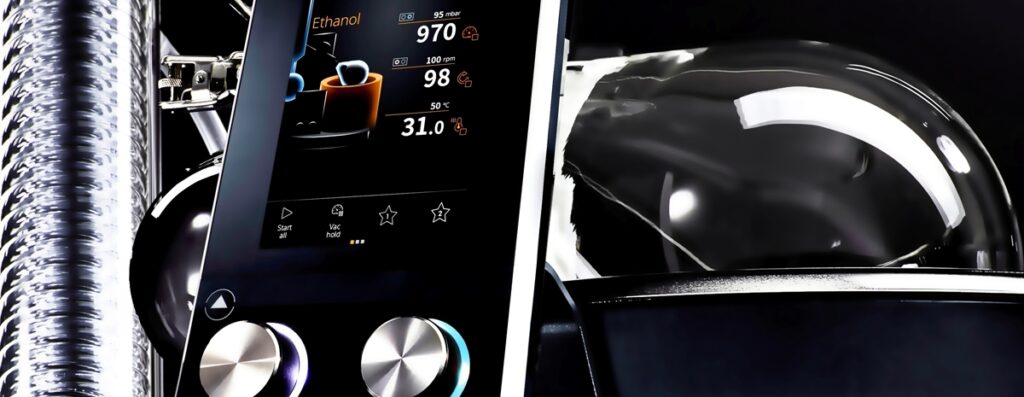We are aware of the standard industry practice of using copper, and it is not our intention to try and change that. Ginovation introduces a technological advancement based on science, which opens up paths to innovative new products.
Copper is very useful in removing bad esters from a wash (low abv) that you are going to distil to create base ethanol. Our glass-based instruments will not be able to do that, but you can simply purchase ethanol that has already been processed in a refinery, or bring the traditional and innovative methods together, using copper to produce your feed ethanol.
The traditional copper pot method is proven with hard botanicals such as roots and seeds. They benefit from high temperatures to release their oils and bouquets that form the very heart of a great gin. In a low temperature maceration and distillation process you can assist the release of the heart by breaking them up e.g. in mortar and pestle. Whilst aroma is sometimes not quite as strong the flavour tends to be very rich, fresh and full.
Our innovation focusses on the many other lovely – and unfortunately often more volatile – botanicals, that can add flavour and fragrance to gin and bring a unique, fresh character.

These fresh and subtle botanicals are fragile. They get negatively impacted by high temperatures, sometimes even damaged. In fact, the heat that benefits juniper, for example, can negatively alter the flavour profile of these less robust botanicals. Only with low processing (maceration and distillation) temperatures can they release their full potential of freshness and purity.
Ginovations’ cold vacuum infusion and distillation method uses a well proven scientific instrument – the rotary evaporator, which you find in many laboratories. Creating a vacuum reduces the temperature at which we can distil, from typically 80C to 35C, and even below. As the mixture begins to evaporate, it hits a very cold condenser that is chilled to a temperature often substantially below 0C, where we capture the resultant distillate.
The potential usage options are many. These are particularly popular:
Small Volume Creative Work
Instead of using larger stills, we have innovators who use our rotary evaporators for creative work developing botanical profiles, that are subsequently translated into large scale production.
Production of (Botanical) Concentrate
We have seen innovators create concentrated extracts from countless botanicals and rather unusual raw materials as far reaching as popcorn and chocolate hazelnut spread. These concentrates are used to create unique cocktails in bars.
Production of (Botanical) Gin
Innovators can create a separate distillate for each of their botanicals and then blend these in a carefully developed ratio with you traditionally distilled gin to create a unique alchemy of tradition and innovation. The final product retains the traditional juniper forward flavour of a great gin but adds a delicious, fresh, pure, and often unique layer of flavours that you experience on both the nose and the palate.
“Ginovation redefines what is possible with Gin.”


